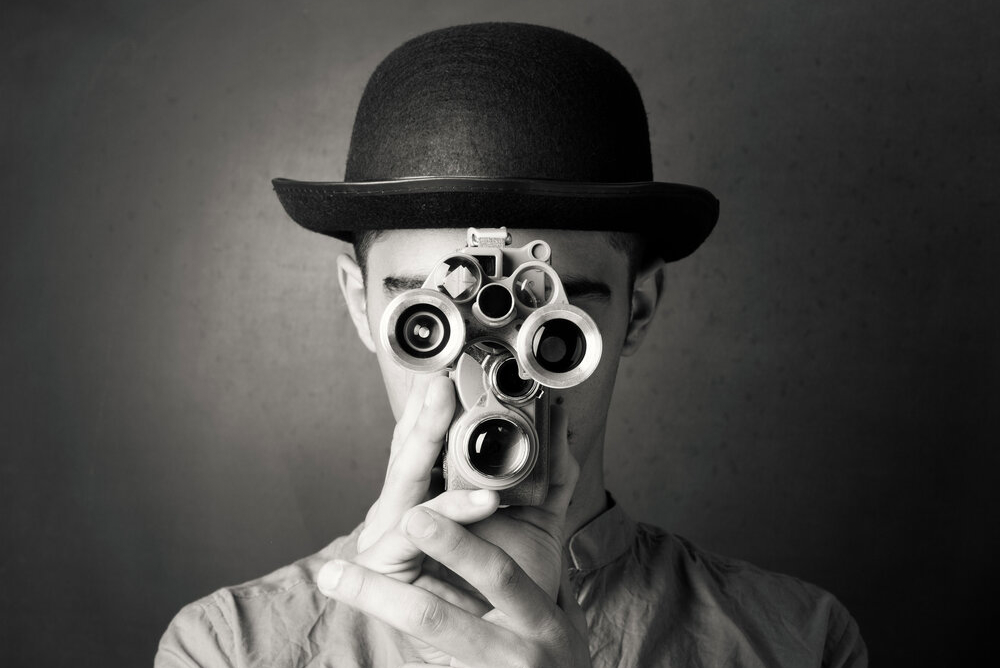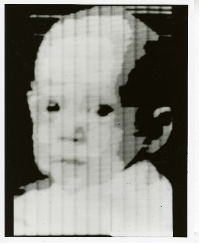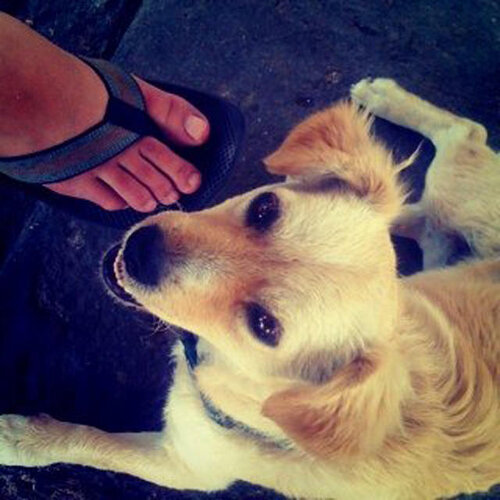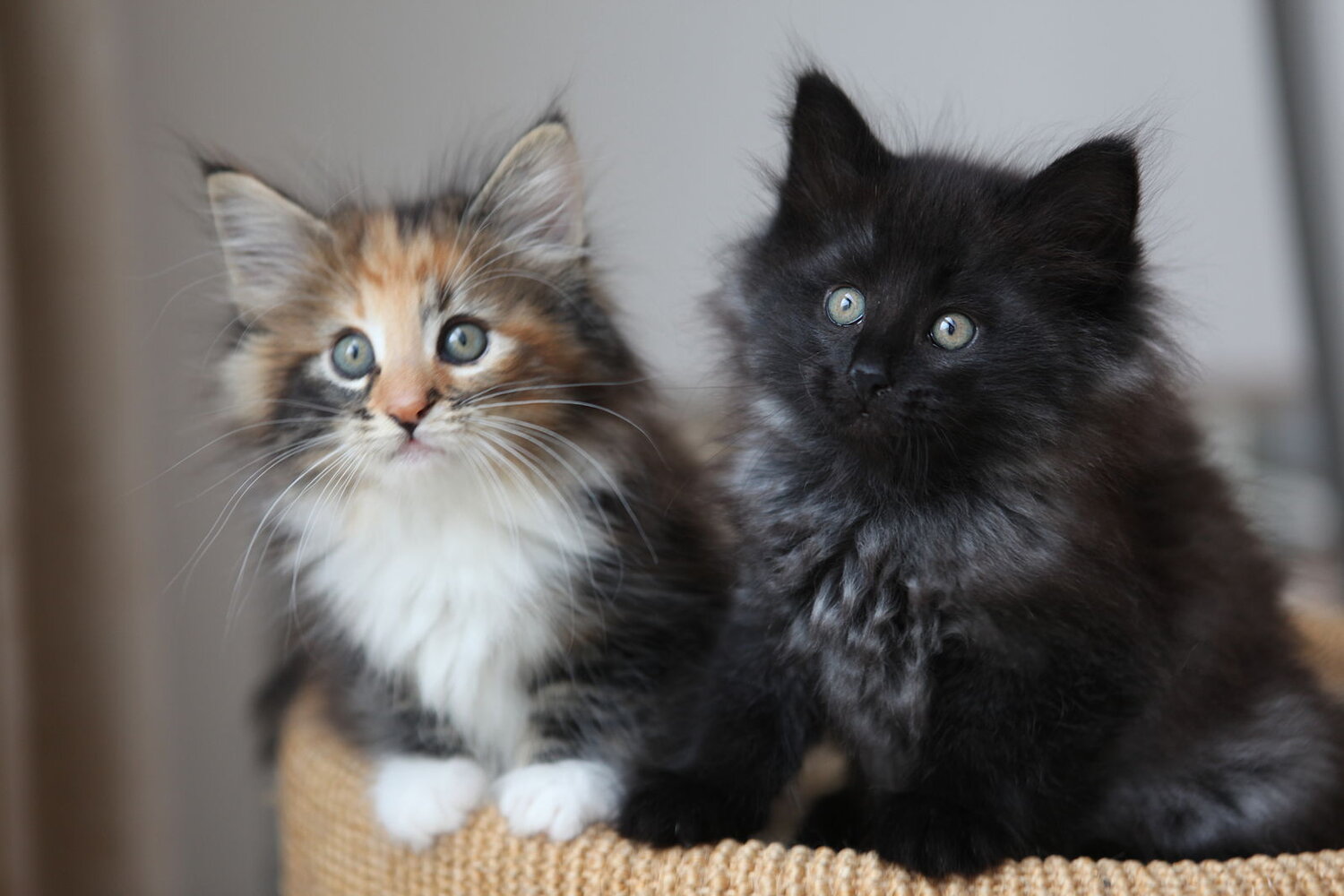
What do the images we share tell us about what’s important to us?
There are over 300 million photos uploaded to Facebook every day. Since the creation of Instagram, more than 40 billion photos have been shared. Approximately three billion snaps are created on Snapchat every day. [1]
The invention of photography has had a profound effect on the world, even beyond that of other deeply influential technologies. As the print-making pioneer Nicéphore Niépce once wrote, “to copy nature with the greatest fidelity” is an aspiration across human lives and cultures.
If you consider that it was impossible to even conceive of photography less than 200 years ago, you may realize just how revolutionary and important it is to all of us. But then if you take a walk down History Lane, you’ll find that we’ve abused this amazing, transformational technology by using it disproportionately for shots of pouty-faced selfies, sweet and sour baby photos, stupid pet tricks, and ugly landscapes. Look at these assembled historical achievements in photography and draw your own conclusions.
The First Photograph
![View from the Window at Le Gras, 1826 or 1827. This first-ever permanent photograph was captured in oil-treated bitumen on a pewter plate by Joseph Nicéphore Niépce in 1827 in Saint-Loup-de-Varennes, France. [2] Source: PetaPixel](png/614a3b0b70684c53ebc52ee2_picture1.png)
![This reproduction was retouched by photo historian Helmut Gernsheim prior to its international release; the plate itself resides at the Harry Ransom Center on the campus of the University of Texas at Austin. [5] Source: PetaPixel](png/614a3b0cdf33176bf3e8c9b3_picture2.png)
Inventor Joseph Nicéphore Niépce began experimenting with variations on lithographic (stone-writing) print-making techniques in the 1810s. [3] Eventually he developed a lithograph-inspired process he called “heliography,” or sun-writing, to transfer an image from a paper engraving to a metal sheet. You could think of these duplications as the first photocopies. [4] Niépce experimented with early photographic techniques but had difficulty producing a picture that didn’t fade from view immediately on exposure to daylight. Eventually, in 1826 or 1827, Niépce managed to make a permanent photograph using a camera obscura pointing out of the upstairs window of his house. With an exposure time of at least eight hours, he captured an image on a pewter plate treated with a light-sensitive varnish incorporating bitumen of Judea, which hardened when exposed to light. A special rinse dissolved all of the bitumen compound in the darkest parts of the scene, a portion of it in the partially exposed midtones, and none of it in the brightest areas, creating a direct positive image on the pewter surface—the world’s first photograph.

The First Selfie
The daguerreotype, named for its inventor, Louis-Jacques-Mandé Daguerre, is a much faster photographic process that uses iodized silvered plates to capture the image and mercury fumes to develop it. It debuted in August 1839. [6]
By October, Philadelphia resident Robert Cornelius had turned the camera on himself, using a box and an opera glass to take a self-portrait in the back yard of his family’s lamp-and-chandelier store. Given the limitations of the technology, it’s possible the 30-year-old spent anywhere from three to 15 long minutes staring into the camera just to register the image. [7]
The daguerreotype remained popular through the 1840s and 1850s, before it was eclipsed by faster and less expensive photographic processes.
“Do you know anything about that wonderful invention of the day called the daguerreotype? Have you seen any portraits produced by means of it? …. It is not merely the likeness which is precious in such cases—but the association, and the sense of nearness involved in the thing … the fact of the very shadow of the person lying there fixed forever!” — Elizabeth Barrett Browning [11]

The First Post-Mortem Photograph
The first post-mortem photograph followed shortly behind, in 1841. As writer and artist Kelly Christian points out, this suggests that “photography was actually filling a kind of memorial void that other forms, such as paintings, could not.” [9]
Some historians estimate that, during the 1840s, deaths were photographed three times as often as marriages. [10]
The First Stereograph

Stereographs are pairs of nearly identical photographs that produce an illusion of depth when viewed through a stereoscope, a device that directs one of the images to the right eye and the other to the left eye. If the images were taken from two positions a short horizontal distance apart, the eyes see them—and the brain interprets them—as somewhat akin to a scene viewed in real life. Though the image is missing other depth cues that would be present in reality, such as the ability to “see around” objects in the image when moving one’s head from side to side, the effect may still be striking. “The first effect of looking at a good photograph through the stereoscope is a surprise such as no painting ever produced. The mind feels its way into the very depths of the picture,” wrote the physician and poet Oliver Wendell Holmes, who designed a handheld stereoscope in 1859. [13]

The First Digital Photograph
Dating to 1957, the first digital photograph wasn’t actually taken with the first digital camera. (The digital camera came much later; Kodak’s Steve Sasson invented it in 1975.)
It was actually a scanned photograph, digitized at a resolution of 176 by 176 pixels, of engineer Russell Kirsch’s infant son, Walden. Essentially, it’s a photograph of a photograph, and the first-ever digital image. [14]
The First Photo Published on the Internet

In 1992, computer scientist and Internet pioneer Tim Berners-Lee was busy creating the World Wide Web. As the story goes, he asked his colleague Silvano de Gennaro, an analyst at CERN, the European Organization for Nuclear Research, for a photo he had taken of the so-called “CERN girls” in Les Horribles Cernettes, a parody pop group founded by CERN employees. De Gennaro gave him the photo, and the CERN girls went down in history—in an unexpected fashion. [15] [16]
The First Photo Taken with a Camera Phone

Before Philippe Kahn could take this picture of his newborn daughter with a camera phone, he had to invent the camera phone.
It wasn’t a big consumer electronics company that invented the camera phone. That distinction goes instead to engineer Philippe Kahn. In the hours leading up to the birth of his daughter, Sophie, on June 11, 1997, Kahn used a soldering iron to wire a Casio QV-10 digital camera to his Motorola Startac cell phone and Toshiba laptop. The ad-hoc solution allowed him to upload 240 x 320 pixel photos of his newborn daughter to a special website, which shared them to his 2,000 email contacts. [13] He and his wife commercialized the technology through their company, LightSurf Technologies, which was acquired by Verisign in 2005 for $300 million. [17]

The First Photo Uploaded to Instagram
Instagram co-founder and CEO Kevin Systrom tested the system on July 16, 2010, months before it was opened to the public, by uploading this photograph of a stray dog. The foot belongs to his girlfriend, and the picture was taken at Tacos Chilakos in Todos Santos in Baja California, Mexico. The golden retriever’s name is unknown. [18]
Years later, Systrom told a reporter, “Had I known it was going to be the first photo on Instagram, I would have tried a bit harder.” [19]
“Photos were seen as the most private type of content and Instagram really flipped that on its head and said photos can be really public.”—Instagram co-founder and CEO Kevin Systrom [20]

Systrom has a point. Though these images occupy an important position in history, the subjects they capture are pedestrian. The rooftops outside Niépce’s window are interesting only because he pointed his camera at them. And countless images of infants and animals may be important to the people who know and love them, but surely they hold no deeper meaning for a wider audience of viewers. Or do they?
Reflecting on this question, I’ve discovered a deep area of research into what is at the bottom of the “cute” phenomenon. Studies have shown that adorable images of babies, puppies and kittens trigger a surprisingly wide range of human physical and emotional effects, apparently including both positive and negative reactions.
Real, physical changes take place in our brains when we view pictures of infants and baby animals. The Austrian zoologist Konrad Lorenz believed we respond to something he called “baby schema” — the large heads, round faces and big eyes that he believed motivate nurturing feelings in other people. Researchers have since found that baby schemas really do activate a part of the brain called the nucleus accumbens, which is associated with caretaking behavior. [21]
The nucleus accumbens releases a surge of the pleasure hormone dopamine, reducing stress levels and decreasing aggression. It’s the same pleasure center activated by sex, music, love, exercise and drugs. Yes—as it turns out, cute images can actually make you high. [22]

Our brains are marvelous organs, but surprisingly easy to manipulate. As I explained in a previous HoloWire article, our memories can be corrupted. We can confuse dreams and reality. The act of taking a photograph—an effort at documenting a small part of our world for posterity—can have the unintended effect of diverting our attention from the very moment we are trying to remember. Furthermore, it now seems, we can be very easily entertained by pictures of human babies (and animal babies) that trigger a dopamine rush, perhaps compelling us to seek out more, cuter images and distracting us from other sources of information.
“[The] global success of kawaii [literally, Japanese for “cute”] has encouraged numerous international corporations such as Victoria’s Secret, Motorola and Google to use ‘cuteness’ as a tool of persuasion for motivating a broader consumer base to buy commercial products, as well as to arouse positive emotions in consumers.” — Shiri Lieber-Milo and Hiroshi Nittono, Osaka University [23]

Corporations have long been aware of the “cute” phenomenon. Look at big-eyed, cherubic cartoon characters like Mickey Mouse or the baby-like pocket monsters that popular Pokémon video games. Japanese has a word for it: kawaii, which literally means “cute,” but commonly refers to the country’s culture of cuteness, which goes beyond a basic appeal to children. As one example, a Japanese start-up called Gatebox now offers single salarymen a live-in companion: a miniature character named Azuma Hikari with big eyes and a childlike voice. She lives in a desktop appliance, like an anime version of Amazon’s Alexa, and sends you texts at work, urging you to come home early. Gatebox calls Azuma a hologram, but she’s really just an animated image rear-projected onto a transparent screen using a high-intensity short-focus projector. It’s an illusion designed to make her feel less like a digital assistant and more like a living creature.
“Consumers may … be more willing to share data with a non-threatening holographic anime character than with the cold, sleek, faceless cylinder that is Alexa,” writes marketing and communications consultant Zara Ramaniah. She says Gatebox is successfully exploiting elements of the baby schema and suggests a more Western version of the product, maybe drawing on the Minions or similar characters from children’s films, could appeal to consumers in North America. [24]
That’s a lot to take in. But it does raise the question: if “cute” photographs trigger a powerful pleasure response that rivals our experience of sex and drugs, and a “cute” personal assistant can make us feel better about our lonely apartments, what other ways can images stimulate our brains? To put it another way, if Oliver Wendell Holmes was right when he claimed “the mind feels its way into the very depths of the [stereograph],” is it possible that realistic holograms, indistinguishable from real objects, could inspire a cognitive rush to rival the dopamine high offered by all these flat, undistinguished images of ordinary infants?
It seems possible, and I’ll expand on these thoughts with some statistical analysis in the next installment of this series. But what seems more important right now, for some reason, are these cute kitties.

Cats have twice as many neurons as dogs and the cognitive capacity of a toddler. In conclusion, here are some totally pointless cat facts you can’t live without:
FOOTNOTES:
[1] https://dustinstout.com/social-media-statistics/
[2] https://petapixel.com/2013/10/02/first-photo/
[3] https://web.archive.org/web/20090907071624/http://www.hrc.utexas.edu/exhibitions/permanent/wfp/niepce.html
[4] https://petapixel.com/2013/10/02/first-photo/
[5] https://petapixel.com/2013/10/02/first-photo/
[6] https://photo-museum.org/isidore-niepce-daguerre/
[7] https://www.loc.gov/pictures/item/2004664436/
[8] https://www.loc.gov/item/2013645729/
[9] http://www.orderofthegooddeath.com/unpleasant-duty-introduction-postmortem-photography
[10] https://www.theatlantic.com/technology/archive/2017/07/pictures-of-death/534060/
[11] https://www.laphamsquarterly.org/arts-letters/outline-and-shadow
[12] https://www.metmuseum.org/art/collection/search/288151
[13] https://www.loc.gov/pictures/collection/stereo/background.htm
[14] https://web.archive.org/web/20130506045538/http://news.discovery.com/tech/apps/digital-image-pixel.htm
[15] https://en.wikipedia.org/wiki/Les_Horribles_Cernettes
[16] https://web.archive.org/web/20120711193819/https://motherboard.vice.com/2012/7/10/crossdressing-compression-and-a-collider-the-first-photo-on-the-web
[17] https://en.wikipedia.org/wiki/Philippe_Kahn
[18] https://www.guinnessworldrecords.com/world-records/453679-first-photograph-uploaded-to-instagram/
[19] https://www.bbc.com/news/technology-45640386
[20] https://www.ft.com/content/e56964b0-1a22-11e5-a130-2e7db721f996
[21] https://www.nationalgeographic.com/news/2015/10/151010-science-psychology-babies-animals-culture-behavior/
[22] https://www.shutterstock.com/blog/the-cute-factor-why-were-obsessed-with-pictures-of-babies-and-animals
[23] https://journals.sagepub.com/doi/full/10.1177/2158244019869904
[24] https://www.linkedin.com/pulse/power-cute-zara-ramaniah/
[25] https://www.foundanimals.org/cat-trivia-41-cat-facts-national-trivia-day/
[26] https://www.foundanimals.org/cat-trivia-41-cat-facts-national-trivia-day/
[27] https://animals.howstuffworks.com/pets/just-how-many-house-cats-are-there-the-world.htm
[28] https://fearfreehappyhomes.com/feline-intelligence-cats-brain-works/
[29] https://fearfreehappyhomes.com/feline-intelligence-cats-brain-works/
[30] https://fearfreehappyhomes.com/feline-intelligence-cats-brain-works/
[31] https://en.m.wikipedia.org/wiki/Cat_meat